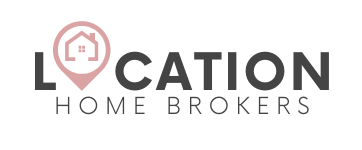Saving up a down payment to buy your first house can seem like a pretty daunting task. If you’ve never had more than a few thousand dollars in the bank at any given time, then setting aside five figures or more may seem impossible.
However, getting a down payment together is not as difficult as you may think, if you go about it the right way.
The first step in saving up your down payment is to pin down the amount you can responsibly spend on a house. Lenders will typically limit your mortgage amount so that your monthly housing payments (including property taxes and insurance) will not exceed 28% of your pre-tax monthly income.
You may feel you can pay more monthly, but keep in mind home ownership usually comes with additional expenses beyond that monthly housing payment: repairs, additional utility bills, homeowner’s association fees, and so on.
A home buying calculator can help you figure out just how much home you can afford, but remember that no calculator can account for every aspect of your financial situation.
The second step is to set a savings plan. Once you know how much you need to save, the next step is to figure out how much you can set aside each month. That will also help you determine how long it will be before you’ll have the full down payment and can start house-shopping.
For example, if you plan to save $45,000 for a down payment, setting a time frame of five years to save $45,000 means you’ll need to save about $9,000 per year, or $750 per month, to make it happen. Squeezing an extra $750 per month from your monthly budget will likely mean some serious cutting of expenses and/or finding new sources of income.
However, you can definitely speed up the process. One way to make the saving process go faster is to get better returns on the money you’re saving by investing part of it in stocks. It’s a riskier course of action than sticking the money in a savings account, but if you have several years before you buy a home, then it could greatly accelerate your savings plan. It would also mean you don’t have to save quite as much to reach your goal, because your money would be earning more money for you.
Another option would be to borrow from your 401(k). If you have a well-funded 401(k) account, you can borrow up to half the money (to a maximum of $50,000) and use that money as part or all of your down payment. Depending on the provider they will either put you on a payment plan to pay that money back, or they will put money into your account to cover that loan instead of adding to your account.
Lastly, if you are a first time home buyer or haven’t owned a home in the last 3 years you can see if your eligible for down payment assistance. This program provides a deferred-payment junior loan – up to 3.5% of the purchase price, or appraised value, whichever is less, to be used for their down payment and/or closing costs.
The traditional 20% down payment is still the best option. For one thing, it lets you skip private mortgage insurance, an annoying expense that can put more strain on your budget. But if 20% down is not in the realm of possibility, there are programs that can get you into a house with a much smaller sum. For example, FHA programs let you pick up a mortgage with as little as 3-1/2% down if your credit score is at least 580.
To find out how much you would need to save for a down payment click here.

0 comments